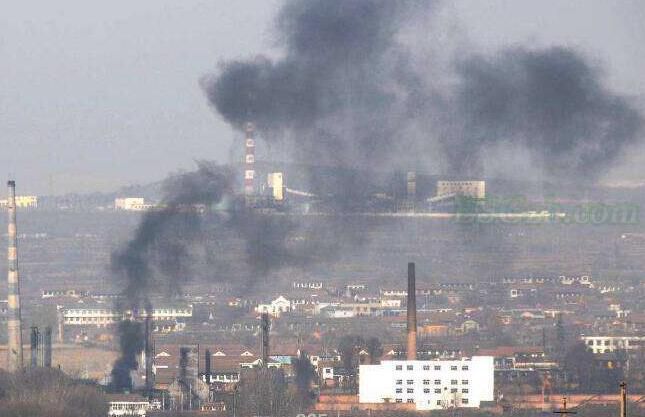

This failure is not only due to excessive free quotas.
There are two main reasons for the failure of price signals in China's carbon market. One is the concern of enterprises about the liquidity of the carbon market, and the second is the low carbon price that has not been rising.
Market liquidity is concentrated in the volume of market transactions. In the first round of performance period from 2013 to July 2014, there is a very obvious phenomenon, the transaction volume and transaction amount increase sharply near the end of the performance period, and after the end of the performance period and before the end of the performance period For a long time, the volume of transactions was extremely low.
In Shanghai, there was even a zero volume within two months after the end of the performance period on June 30. On the day of the market opening on June 19, 2014 in Chongqing, after a symbolic transaction, no transaction appeared as of August.
Judging from the ratio of quota trading volume to the total quota, the cumulative quota trading volume of the Shenzhen carbon market accounted for about 5% of the total quota in 2013, the highest among the seven pilot markets. Among the remaining six pilots, Beijing is about 3%, Hubei, Chongqing and Shanghai each account for 1%, and Guangdong and Tianjin are less than 1%. In other words, more than 90% of the quota is not involved in the transaction. The enterprise lacks the willingness to trade, and is just fulfilling the task of fulfilling the contract.
Huang Jiefu, an independent consultant of the International Emissions Trading Association in Beijing, believes that none of the seven existing trading platforms in China owns equity in private enterprises or private investors, and the quotas are only allocated by each administrative region on each designated trading platform. There is no intra-exchange competition. This is one of the root causes of the poor liquidity of the 7 carbon exchanges.
On the other hand, although the market carbon price of China's carbon trading pilot fluctuated, it has remained at a low level, basically staying below 60 yuan per ton, and the average price is about 30 yuan per ton.
The carbon price will not reach RMB 200 ~ 300 per ton until 2020
Jiang Zhaoli, deputy director of the Department of Climate Change of the National Development and Reform Commission, pointed out that the carbon price will not reach 200 to 300 yuan per ton after 2020. Before that, companies cannot feel real pressure. In 2018, the highest average transaction price in China's carbon market pilot region was Beijing, with a carbon price of about 58 yuan / ton, while Chongqing's was only 4.36 yuan / ton.
According to the US Environmental Protection Agency estimates, the social cost of carbon emissions is 41 dollars per ton, or 272 yuan. Currently, the carbon price of almost all carbon emissions trading systems in the world is lower than this price. The main reason for the low carbon price is the excessive allocation of quotas.
Taking the EU as an example, in order to provide a more relaxed environment for their own companies, member states often exaggerate their carbon emission reductions when they declare them, resulting in an excessively high quota. Estimates found that the total emissions verified by countries in 2005 were 200 million tons, which was more than 3% lower than the upper limit of the total emissions allocated to each country. As a result, the carbon price of the European Union fell to zero in 2007.
Therefore, since 2008, the EU's reform path has been along the direction of reducing quotas. On the one hand, it is to reduce the total amount of emission allowances and the number of free allowances; on the other hand, to promote the construction of a carbon emission market and increase the proportion of quota auctions.
In the second phase of EU carbon market reform (2008-2012), the European Commission lowered the total emission ceiling reported by member states by 10.4%. In the third stage (2013-2020), power collection began, and each member state was not allowed to set quotas by itself, and the quotas were allocated uniformly from top to bottom. At the same time, the share of carbon emission rights used for auctions has also increased from a maximum of 10% in the first and second stages to a minimum of 30%, and it is planned to reach 70% by 2020.
In 2018, the EU formally adopted the reform plan for the fourth stage (2021 to 2030), which further increased the quota reduction ratio from 1.74% to 2.20%.
Although China has learned the lessons of the European Union and stabilized and protected carbon prices through government sales and repurchase quotas, in general, the pilot areas are still dominated by free quotas, and the non-marketization problem of carbon trading is serious.
Jiang Kejun, a researcher at the Energy Research Institute of the National Development and Reform Commission, said that only when the price of carbon emission reductions is passed to consumer terminals, and the market price difference between different carbon emission products is large, can a good incentive mechanism be formed.
Zhang Xin, director of the NCSC Carbon Market Management Department, said that China has not yet formed a particularly mature market, and it is necessary to enrich the trading subjects in terms of system design to allow more industries and enterprises to participate.
In this process, can we grasp the relationship between the government and the market, especially the wisdom of the ruling party.
Zhang Xin believes that according to the current "three-step" strategy of China's national carbon market, after entering the second stage from the preparation period, the government should act as a market supervisor and mentor to handle the relationship between the government and the market; enterprises should also take Carbon emission rights are managed as assets, and market-based measures are used to establish corporate carbon asset management systems.
